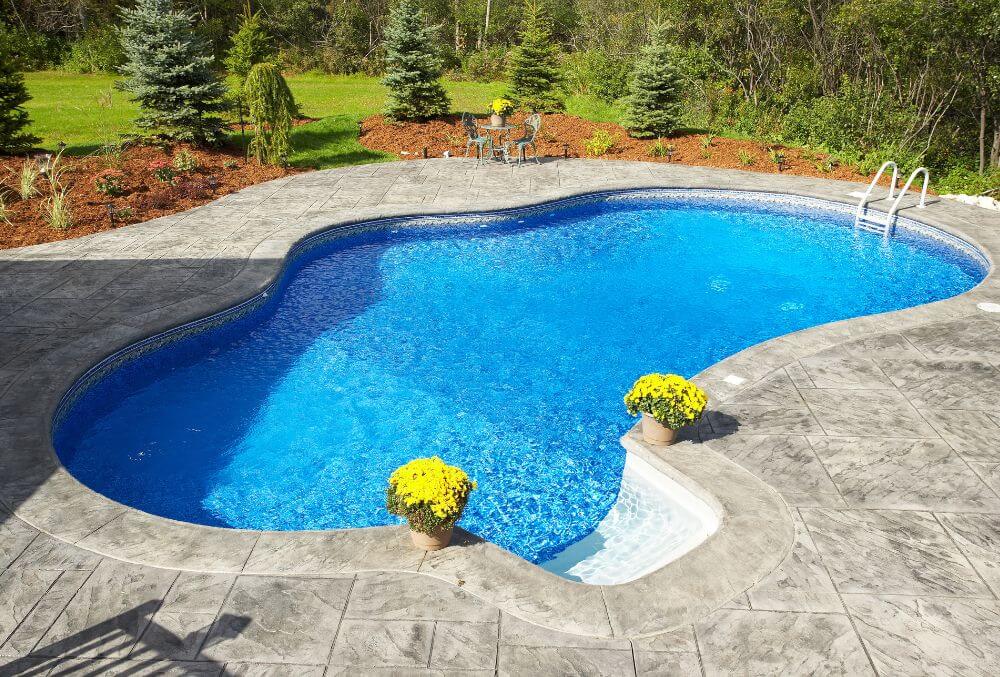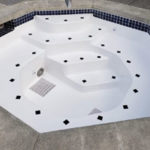As the cost of fiberglass pools, concrete pools, and vinyl liner pools continues to be a topic of debate, more homeowners are turning to fiberglass as their material of choice for surfacing inground pools.
Get the latest and most up-to-date data about fiberglass pools in this blog. Dive deep to learn more.

Is Fiberglass the New Inground Pool?
There are many reasons for this trend, but the most compelling is the fiberglass.
Fiberglass inground pool cost has dropped significantly recently, making it a more affordable option for many homeowners.
Additionally, fiberglass pools are a cinch to maintain over concrete or vinyl liner pools and offer several other advantages.
Is There a Fiberglass Pool Shortage?
Due to a global resin shortage, the swimming pool industry saw record-breaking demand. Still, in 2021, it slowed to a crawl in production.
Numerous distributors and fabricators have reported delays in supplying fiberglass swimming pool products, especially in North America. The suppliers they currently use—most Chinese—do not entirely satisfy these manufacturers across all industries.
China has seen similar demand for glass fiber. Still, reports indicate that it has yet to increase its fiberglass production significantly in the last year. It means that plants are at or near capacity, and there is no way to increase production immediately.

Other Factors That Affect the Cost
Recent data indicate that things worsened after the initial shock of COVID-19. Even though production and new orders have increased a little in the first half of 2022, deliveries still need to catch up.
Many factors are at work in the supply chain problem, such as:
Demand Increase in Various Markets
To meet consumer demand in the spring of 2020, many industries, including the auto industry, flocked to online marketplaces. Unfortunately, they could have been more consistently satisfying due to dwindling supplies.
Data from that year shows that demand for fiberglass skyrocketed by nearly 80% while production dropped by 30%.
Pandemic Restrictions
Due to the pandemic, numerous production facilities had to shut down, which caused shortages. Additionally, traveling by any means has grown more complex. Likewise, fewer people were capable of working.
Transportation Costs
Even though the pandemic caused travel restrictions, there are many other reasons transportation costs have gone up even up to 2022:
- Fuel Prices
- Labor costs
- The Cost of Damaged Goods
- Inefficient Routes
- Distance
- Regulation of Government
Of course, the increase in the listed things above increased many of today’s product prices, including fiberglass.
Declining Exports
Producers have reportedly paid and absorbed most of the 25% tariff on U.S. exports for more than two years. However, the reason for declining exports is that they need fiberglass!
As the economy has improved, fiberglass has become in demand locally. Since then, export businesses have started focusing on domestic sales rather than exports, which is more profitable.
Natural Calamities
Many winter storms and cold weather also shut down some chemical manufacturing plants. An example would be the 2021 Texas snowstorm.
Some producers are still getting back on their feet after numerous tragedies that have struck the globe, whether man-made or natural.
Are Fiberglass Pools Worth it for 2023?
One thing is sure: as the summer winds down, all industries will have their work cut out to improve the supply chain issues that have hampered so many this pool season. Fiberglass for inground swimming pools will still be a viable option.





